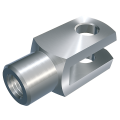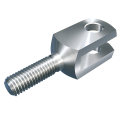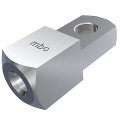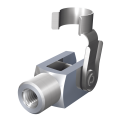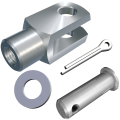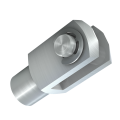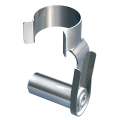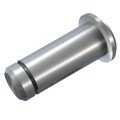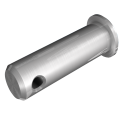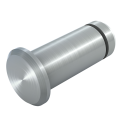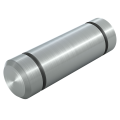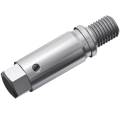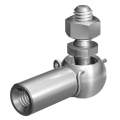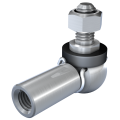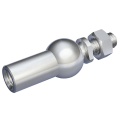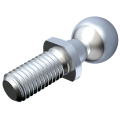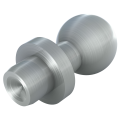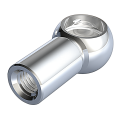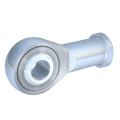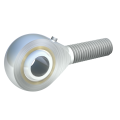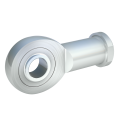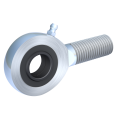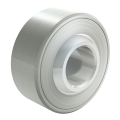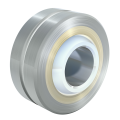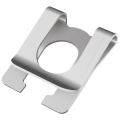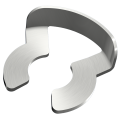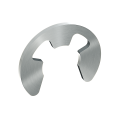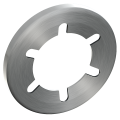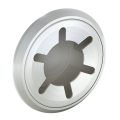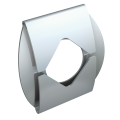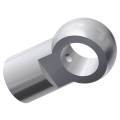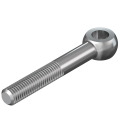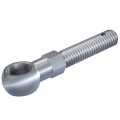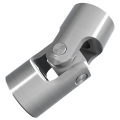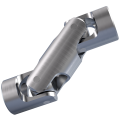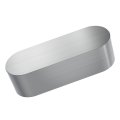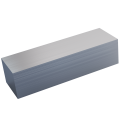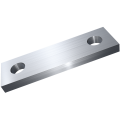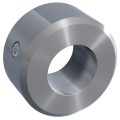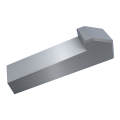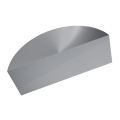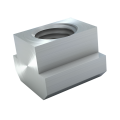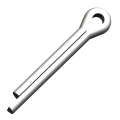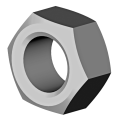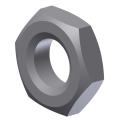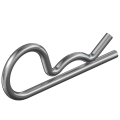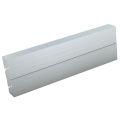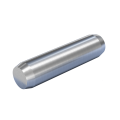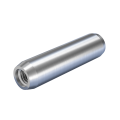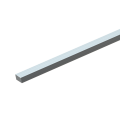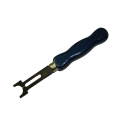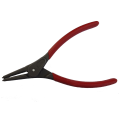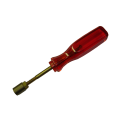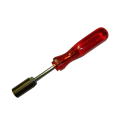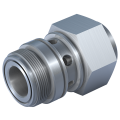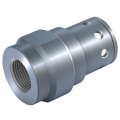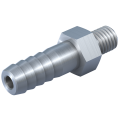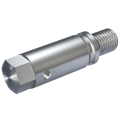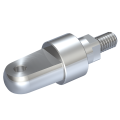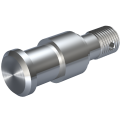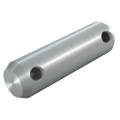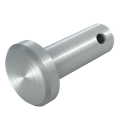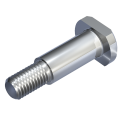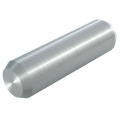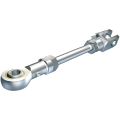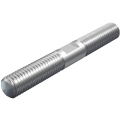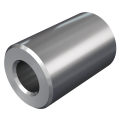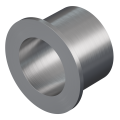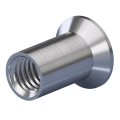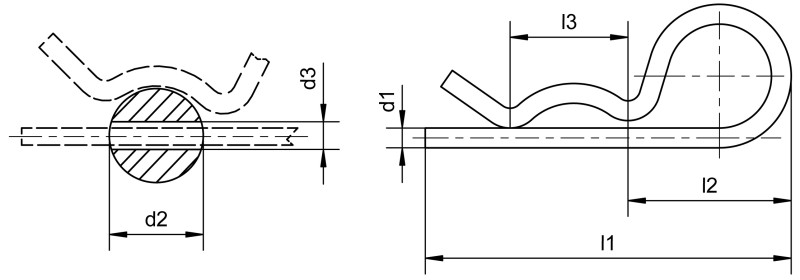Fast-track this part (max. 400 units) through our production facility. Shorten the delivery time by 1-2 working days. We are currently exclusively testing this delivery service for Germany.
incl. VAT
plus shipping costs
To cancel your filter settings again, click on the "Clear" button below the table.
You can display product details, including the eShop function and 3D model , by clicking in the row corresponding to the required article.
1. Product description
Spring cotter pins or spring pins, similar to DIN 11024, represent an indispensable retainer in mechanical linking technology. Spring cotter pins similar to DIN 11024 are part of detachable connections in the field of machine elements and serve as self-locking elements. They are characterized by their special design in the form of a double spiral, which not only allows practical handling but also ensures reliable and robust retaining of bolts and axles in various applications. These spring cotter pins are designed to provide a quick and efficient solution for both stationary and dynamic connections, ensuring secure fastening against unintentional loosening under vibration or movement.
Made from high-quality materials, these spring cotter pins offer an impressive combination of elasticity and strength. This allows them to adapt to the loads and mechanical forces to which they are subjected, without losing their structural integrity. The selection of materials, such as high-quality spring steel wire or stainless steel, contributes to the product's corrosion resistance and longevity, which is especially important in harsh environments or under extreme conditions.
Their versatility is highlighted by a range of sizes and designs specifically aimed at meeting a wide range of application requirements. This ensures that there is a suitable solution for almost any fastening and retaining task. The design of the spring cotter pins promotes intuitive use, allowing these retainers to be quickly mounted or dismounted without the need for special tools. This significantly contributes to increased efficiency and reduced assembly times, making them a popular solution in industry and crafts.
2. Product details
Size: 1,5 – 8
Material group: Steel or stainless steel
Surface: bright or electr. galvanized white
3. Application Areas & Compatibility
The spring cotter pins similar to DIN 11024 are used in an impressive variety of industrial and technical sectors. Due to their innovative and practical design, these Spring cotter pins are ideally suited for use in mechanical engineering, automotive engineering, agricultural engineering, and beyond in almost all areas where reliable and quick securing of bolts, shafts, and axles is required.
The advantage of the design of a spring cotter pin lies in its ability, through its unique double coiled ends that expand upon insertion, to maintain a tight fit and thus prevent accidental loosening. Compared to other cotter pins, such as those according to DIN 94, spring cotter pins ensure a more robust locking mechanism through their spring functionality, which allows for easy installation and extraction without compromising strength.
Mechanical and plant engineering: Almost every machine or plant consists of a multitude of components that perform movements during operation or are subject to movable loads. This dynamic requires connections that are not only strong and reliable but also can withstand vibrations and other mechanical influences. This is where spring cotter pins come into play, by offering a permanent and secure lock that allows for easy assembly and disassembly without impairing the stability of the connection. The use of spring cotter pins in mechanical and plant engineering supports the longevity and reliability of critical connections. Through their design, spring cotter pins prevent nuts and bolts from loosening due to vibrations or rotational movements. This is particularly important in areas where regular maintenance is difficult or time-consuming and where unintended loosening could lead to failures or even safety hazards.
Agriculture: There, spring cotter pins are used to secure various removable components of agricultural machinery, from tractors to combine harvesters. The quick-release function of the pins provides efficiency and safety in the fast-paced, often time-critical agricultural environment. Their durability and corrosion resistance guarantee longevity despite the challenging outdoor conditions prevalent in agriculture.
Construction and architecture: In the construction of buildings, bridges, or scaffolding, the materials and construction elements used are continuously exposed to mechanical stress and environmental influences. In this context, spring cotter pins are frequently used to securely fasten critical components such as safety cables, scaffold connections, and other load-bearing elements. Their use ensures that these connections remain resilient and secure even under conditions of stress, weather, and time.
4. Advantages and Benefits
High Safety and reliability: Spring cotter pins provide a robust and secure connection, protected against accidental loosening due to vibrations or external forces. This enhances the operational safety of machines, vehicles, and systems, especially in critical applications where the reliability of connecting elements is of utmost importance.
Easy and quick assembly and disassembly: A significant advantage of spring cotter pins is their user-friendly design, which allows for quick and tool-free assembly and disassembly. This saves time and effort during installation, maintenance, and repair work, thereby increasing efficiency.
Wide range of applications: Thanks to the variety of sizes, constructions, and materials, spring cotter pins can be used in a wide range of applications. They are thus a flexible solution for various industrial sectors.
Durability and resilience: The material of the spring cotter pin is crucial for its strength, flexibility, and corrosion resistance. Commonly used materials include spring steel wire, also stainless steel, which offers excellent durability and rust resistance.
Cost Efficiency: Due to their longevity and reduced maintenance requirements, spring cotter pins offer a cost-efficient solution for connecting technology. The saving of time and resources during assembly and maintenance leads to a reduction in overall operating costs.
Adaptability: Overall, spring cotter pins are an excellent choice for users who value reliability, efficiency, and flexibility. Their broad range of advantages and benefits makes them an essential component in modern connection technology, contributing to increased productivity and ensuring functionality in numerous areas.
5. Assembly and Installation
The assembly and installation of spring cotter pins, similar to DIN 11024, are characterized by their user-friendly design and ease of use.
Step 1 - Preparation: Before starting the installation, it is important to check if the spring cotter pin is suitable and properly sized for the specific application. This includes verifying the diameter and length of the pin concerning the size and specification of the bolts, shafts, or axles to be secured. It should also be ensured that the surfaces where the spring cotter pin will be attached are free from dirt and damage to guarantee an optimal connection.
Step 2: -Inserting the spring cotter pin: The spring cotter pin is inserted into the designated hole of the element (e.g., a bolt, shaft, or axle). This is usually done manually by hand without the need for special tools. Thanks to the flexible design of the spring cotter pin, it is easily inserted into the hole. As it advances, the spring cotter pin bends until it returns to its original shape and anchors firmly in the hole.
Step 3 - Checking the security: After the spring cotter pin has been inserted, it is crucial to check if it is correctly and securely seated. Proper installation is characterized by a snug fit where the spring cotter pin cannot be unintentionally pulled out or loosened by vibrations. This check prevents potential safety risks and ensures reliable fastening.
Step 4 - Maintenance and inspection: Although spring cotter pins provide a permanent and secure connection, it is advisable to conduct regular inspections, especially in applications exposed to extreme conditions or high loads. This prevents premature wear and ensures long-term functionality and safety.
Adaptability: Overall, spring cotter pins are an excellent choice for users who value reliability, efficiency, and flexibility. Their wide range of benefits makes them an indispensable component in modern connection technology, contributing to increased productivity and ensuring functionality in various fields.
6. Accessories and Extensions
Spring cotter pins similar to DIN 11024 provide valuable enhancement in their field of application when used in combination with clevises DIN 71752 / DIN ISO 8140 and the washer DIN 125 form A. This combination opens up a wide range of application possibilities in mechanical constructions and systems where flexibility and the ability to quickly adapt are crucial. The combination of spring cotter pins and clevises enables quick and secure exchange or adjustment of connecting elements without the need to completely disassemble the construction.
Additionally, spring cotter pins can be used in conjunction with protective caps to secure the ends of the pins after assembly. These caps not only provide protection against sharp edges, thereby minimizing the risk of injury, but also help prevent the ingress of dirt and moisture into the connection point, which in turn enhances the corrosion resistance of the construction.

